West Africa Review (2000)
ISSN: 1525-4488
IGBO WOMEN FROM 1929-1960
John N. Oriji
The Aba Women's Revolt was one of the most significant events that occurred in Nigerian history during colonialism.1 It was for example, the first major revolt of its type that was organized and led by rural women of Owerri and Calabar Provinces which contained a population of two million people, located in a total land mass of about 6,000 square miles (Van Allen 1981, 60). Like other major events of its magnitude, the revolt has continued to attract much scholarly inquiry and discourse, unparalleled in Igbo history until the Nigeria-Biafra war.
The historiography of the revolt itself is revealing in terms of the methodological problems it has raised, and the conflicting interpretations scholars and feminists have offered to explain its underlying roots, the organization of women, and their overall achievements.2 While some of these themes will be covered in this essay, I hope to address different aspects of the revolt that have received little attention by attempting to answer the following questions: What type of women led the revolt, and how did their leadership enhance their social status during and after the revolt? What legacies did the revolt leave in Igbo society before Nigerian independence in 1960, and how have the legacies helped women to attain a better social standing in modern Igbo society?
Methodological Problems: Sources
Most of the primary sources used in studying the revolt were compiled by colonial officers who were largely concerned with finding its causes to establish a more functional and practical way of implementing the policy of indirect rule in southeastern Nigeria. The orientation of the colonial officers which, in the first instance, was meant to justify colonialism, affected the reports they compiled in varying ways. For example, the Women's Revolt was known in official circles as the Women's riots, to create the impression that they were "disturbances" caused by inarticulate, irrational, and disorderly women who woke up one morning on the wrong sides of their beds. But modern historiography has shown that the women were well organized, and had leaders who clearly articulated their grievances during what they saw as "Ogu Ndem" (Women's War). That's why their movement is captioned in this paper as a revolt instead of "riots."
One can also raise issues about the linguistic difficulties some of the colonial officers who did not speak Igbo encountered. Their reports, which were compiled through interpreters who were barely literate in English, are subject to misinterpretations and distortions. The Igbo dialect is complex, and to an outsider, it could be perplexing. It is then not surprising that when Captain John Cook, a District Officer who had mastered the Onitsha dialect was transferred to Bende District during the genesis of the Women's revolt, he confessed that he did not understand the Igbo language spoken in his new area of jurisdiction.3
The major primary source for studying the revolt is the Report of the Aba Commission of Inquiry (1930). The report itself is problematic since all those who testified, took an oath, and the hearings were regarded as formal court proceedings. Women in many communities retained lawyers who briefed them on what to say, and what to withhold. Under the circumstance, it is unlikely that some of the testimonies represented the actual feelings and views of the women.4
My own field experience shows that people were still afraid of being interviewed by colonial officers many years after the Women's revolt. In 1933 for example, J. G. C. Allen who wrote monumental intelligence reports on the Ngwa clan, visited the Amavo community to interview its elders on their local history and culture. Those who saw him simply took to the bush, fearing that he came to ask them implicating questions about the Women's revolt. Allen frustratingly left Amavo without saying much about its history in his report.
The primary sources, however, are valuable, especially if they are compared and used along with the numerous works written on the Women's revolt by professional anthropologists, historians, feminists and others. The historiography of the Women's revolt will also be enriched when the findings of some of the recent research projects are published. As discussed below, all the sources constitute one of the major legacies the Women's revolt has left in Igbo studies.
Achievements of the Women's Revolt
Renaissance in Igbo Studies
Igbo studies experienced a remarkable renaissance as a result of the women's revolt. The colonial administration, which was taken by surprise by the revolt, realized that it knew little about the Igbo whom it had ruled for almost three decades. The administration then took various measures that helped in promoting Igbo studies. It, for example, asked District Officers (Do) to submit "intelligence reports" on the history and culture of Igbo societies. The administration also set up a Commission of Inquiry in 1930 to determine the causes of the revolt, and commissioned in the 1930s, anthropologists like M. Green and S. Leith-Ross to study Igbo culture, paying particular attention to the varying roles of women in their societies. These and other works which constitute the primary sources for studying Igbo history and culture, have enabled modern researchers and feminists to embark on more detailed and scholarly analyses of the Women's revolt. The women's revolt, no doubt, provided an incredible stimulus to Igbo studies, comparable to the Nigeria-Biafran war of the 1960s.
Enrichment of Igbo Folklore and Rituals
Igbo folkloric songs, and dance were greatly enriched during the women's revolt. Women composed songs embodying their grievances, as they danced, and "sat" on the Warrant Chiefs, or marched to the District Officer to present their petitions. In Aba-Ngwa area, women chanted traditional war songs sang by male warriors while marching to battle entitled: "Nzogbu, Enyimba Enyi" (literary meaning: We are like elephants, marching to battle, crushing obstacles on our way). Some even sang saying that women were as strong as the elephant, "Ndem mbu Enyi, Enyi, Ndem Mbu Enyi." Interestingly, these songs were quite popular in Biafra, revealing the extent to which the folkloric songs of the women's revolt influenced Igbo "martial songs and music" during the Nigerian civil wwar.5
As for the rituals, my recent trip to Nigeria was quite insightful. During the trip, I happened to have gone to Union Bank, Aba, for some transactions on August 12, 1999. During my discussion with the accountant, the Senior Manager whom I had not met before was passing by, and the accountant introduced him to me. The Manager politely invited me to his office, looking quite excited. While in his office, he told me of an event that would take place shortly, and appealed to me as an educated Ngwa man living in the U.S., to spend a few minutes and watch it with him and other bank officers. The Manager then gave me a gist of what was happening: there was a large tree, which posed a threat to the bank building, and the yardmen refused to trim its branches because they believed it was a sacred tree where 25 women killed in Aba during the Women's revolt were buried. According to the yardmen, any time one of them trimmed the branches, the individual got mysteriously sick, and in one instance, they remembered one of their crewmembers died after cutting the branches. The only remedy, the yardmen claimed, was to invite the Traditional Ruler of the town to pour libations and perform rituals around the tree before anybody could touch it. That was why the Manager wanted me to wait, and happily, within a few minutes, the Traditional Ruler arrived with some elders, and in a solemn mood, he paid tribute to the "unknown soldiers" buried under the tree, and performed the rituals necessary for cutting its branches. This rare event reminded me about the significance of the Women's revolt in traditional Igbo religious values and ideas, and the importance place it continues to occupy in their rituals practices.6
The Emergence of Powerful and Heroic Leaders
It is a well-known adage in history that heroes and heroines are born during a crisis. The Aba Women's revolt produced many heroines who emerged as distinguished and courageous leaders of the movement in their communities. Interestingly, while the names, and varying roles of these heroines were recorded in the Collective Punishment Inquiry, and the Commission of Inquiry held in 1930, oral traditions conducted recently in parts of Igboland have revealed the towering influence some of them acquired during and after the revolt. A broad analysis of the heroines beginning with the community where the revolt started is insightful:
Nwanyeruwa and the Crisis that Sparked off the Revolt in Bende District
The Women's revolt of 1929 was sparked off by a scuffle between Nwanyeruwa, a woman of Ngwa ancestry married in Oloko, and an enumerator, Mark Emereuwa who was asked by Okugo, the Warrant of the town, to help in obtaining an accurate census of his people as mandated by the District Officer. In Oloko and others parts of Igboland, census was associated with taxation, especially, as the colonial administration had taken a similar census in 1926 without revealing the fact that it would be used in imposing tax on men in 1928. In addition, there was widespread rumor that fueled the fears of women claiming that both men and their wives would be taxed after the next enumeration. Thus, before the counting began, women had decided in their meetings to wait and see who would tax them during the hyperinflation of the 1920s when family incomes were declining rapidly (Oriji 1997, 90-97).
Emeruwa never expected that task he was asked to perform would trigger a massive revolt of Igbo women when on that fateful day, November 18, 1929, he went to late Ojim's compound, his first place of call, and asked his widow, Nwanyereuwa, to "count her goats, sheep and people." In anger, the woman retorted, "was your [late] mother counted?" In order words, why do you want me to pay tax? Don't you know that women don't pay tax in traditional Igbo society? The violent encounter and verbal exchanges between the two, infuriated Nwanyeruwa who then rushed to the town square to report the incident to women who were incidentally holding a meeting that day to discuss how they would respond to the "tax problem."7
Oloko women, after hearing Nwanyeruwa's account, went into action, believing that women would be taxed. They sent leaves of palm-oil tree (a symbol of invitation) to women in other parts of Bende District, nearby Umuahia and Ngwa areas and other places, and within a few days, about 10,000 women were said to have assembled in Oloko, "sitting" on Warrant Chief Okugo, and demanding his trial and resignation.8
Nwanyeruwa: An Apostle of Non-Violence and the Heroine of Heroines
Nwanyereuwa played a major role not only in precipitating the revolt, but emerged as a leading advocate of non-violence during the protest marches. As an elderly woman, her words of wisdom were often heeded by more youthful women in her community who led the revolt and started "sitting" on Warrant Chiefs, singing, and dancing around their houses until they surrendered their insignia of office and, and resigned. Although Nwanyeruwa's influence was largely confined to her community, it's noteworthy that the revolt in many parts of Igboland took a similar pattern, as women first massed in their village squares, and then moved to sit on their Warrant Chiefs. Perhaps, without the influence of Nwanyeruwa, and others to be discussed, the revolt would have led to more bloodshed, and casualties.9
Women from Oloko, Umuahia, and northern Ngwaland in the then Bende District, as well as other parts of Igboland, saw Nwanyeruwa as their heroine who courageously fought for their cause, and "prevented women from paying tax." It's noteworthy that when the revolt spread, leaders of the revolt from various places came to Nwanyeruwa, requesting her to put in writing, the assurances she had received from the District Officer (DO) that women would not be taxed. She complied, and a letter written on her behalf stated that the District Officer "said women will not pay tax till the world ends.[and] Chiefs were not to exist any more" (Ibid. cited by Mba 1982, 82).
It is also significant that women from Bende, Ngwa and other places rallied round Nwanyeruwa during the revolt, and gave her donations of ten shillings per village. The money was used partly to entertain the large number of women who visited Oloko, and partly to defray the transport expenses of Oloko women who travelled to Umuahia, Nbawsi and Port Harcourt to cool the tempers of women in those towns, and reassure them that they would not pay tax.10 Members of the Aba Commission of Inquiry were then right when they noted that:
Nwanyeruwa became and still remains a name to conjure with..[and the Oloko trio] cleverly used her as the symbol of womanhood rising against oppression (The Aba Commission of Inquiry (1930), 9).
"Emissaries of Peace, and Apostles on Non-Violence": The Oloko Trio: Ikonnia, Mwannedia and Nwugo
The influence of Nwanyeruwa on the Oloko trio is yet to be studied. But as their elder, the trio who probably listened to her appeal for non-violence, are celebrated today as the most outstanding "emissaries of peace" during the revolt. The Oloko trio was selected as the spokespersons of Oloko women due to their youthful vigor, intelligence and oratory. The District Officer (DO), Captain John Hills who paid tribute to their leadership qualities, often sent them to "hot spots" during the revolt, to ensure that the protests did not escalate and lead to violence. In Oloko for example, tempers ran high among women on November 30, 1929, when the DO who assumed duty that day, refused to accede to their demand for the immediate trial of Warrant Chief Okugo who had been arrested for allegedly assaulting some of them during the revolt. The women continued to follow the DO wherever he went from morning till evening, kind of "sitting on him" until his wife got in touch with the trio and reached an agreement with them. The trio promised to get the women out the DO's way if he granted their request. Although the DO doubted the ability of the trio in controlling the women who had become increasingly restless, he was surprised that as soon as he announced that Okugo would be tried the next day, the women quietly dispersed. The women, however, returned on the day of the trial, and when Okugo was found guilty and jailed two years, they all jubilated (Ibid.).
The DO, realizing how powerful the trio was, used them to prevent violence in other areas. In Umuahia for example, women had massed in the town to begin protest against the Warrant Chiefs. As the DO feared that the protest might get out of control and endanger European factories and government establishments, he quickly contacted the trio to dissuade the women from embarking on their protest. The trio addressed the women, and to the amazement of the DO, the protest march did not take place (Mba 1982, 82).
It is noteworthy that the DO was also greatly concerned about the situation in Aba where women had started to burn government offices and European factories after two of them were killed in a car accident by a reckless British driver. The DO invited the trio to send a telegram to Aba women to eschew violence, and carry out their protests peacefully. The telegram did not, however, appear to have had any significant effect since arson and looting continued in Aba until the police and army was dispatched to the town (Ibid.).
Heroine of the Revolt in Aba-Ngwa Area: The Power of Literacy
One of the most outstanding leaders of the revolt in Aba-Ngwa area was Madam Mary Okezie (1906-99), the first Ngwa woman to gain Western education. She started to attend the Anglican Mission school at Opobo in 1915, and after her graduation, she became a teacher in her alma mater, and other mission schools in Umuahia, and Aba. Madam Okezie continued teaching till 1938 when she went to a nursing school at Aba and England, and later served as a Health Visitor in the Ministry of Health until 1964.11
Madam Okezie was teaching at the Anglican Mission school in Umuocham Aba in 1929 when the women's revolt broke out. Although she did not as a civil servant participate in the revolt, Madam Okezie was very sympathetic to the women's cause. It is not surprising that when some Ngwa women requested her to write a memo on their behalf to be submitted to the Commission of Inquiry in 1930, she willingly granted their request without charging them any money. Her memo is significant not simply because it was the only one written by a woman, but due to the fact that it clearly articulated the grievances of the women, and gave some insight into the course and consequences of the revolt in Aba-Ngwa area where the most violent protests took place in Igboland (Ibid).
Madam Okezie clearly emerged as the most famous leader of Ngwa women after the revolt. She became a leading exponent of women's rights, calling for better health facilities for women, and their involvement in governance. Her influence towered in 1948 when she founded the Ngwa Women's Association to promote the education and welfare of women. Madam Okezie was continuously elected the president of the Association for over two decades, and her achievements have continued to be a source of inspiration for the younger generation of Ngwa women (Ibid).
Women Chieftains of Mbaise, and Royalty Accorded to Them
a) Mary of Ogu Ndem, "Mary of the Women's War"
Research in Mbaise folk tradition has shed some light on the towering height leaders of the women's revolt attained in their communities.12 Among the women called "Eze Ndi-Iyom" (chief of women), was one Mary, the overall leader of the women's revolt in Onicha Ezinihitte, who was popularly known as "Mary Ogu Ndem" (Mary of the Women's war). According to an informant, Mary:
Was treated as a V.I.P, and caused tremendous stir of excitement whenever she visited any village. Not only were all the village roads swept and weeded, but valuable sheep and goats would be killed for festive eating. All the women would stand along the road to watch and wait for [her]. She would come shaded by an umbrella and her deputy leaders would process behind her. She was the great mistress who laid down the rules (Ibid. 13- 14.).
b) The Heroic Warrior: Ihejilemebi Ibe of Umuokirika Village
Similarly, the fame the next woman, Ihejilemebi Ibe of Umuokirika, attained was very remarkable. She was a woman known for her incredible bravery and strength of character before and during the women's revolt. Ihejilemebi (meaning: may good things not end when it's my turn), had before the revolt, served as the head of women's spy team during local wars, and a member of the war council. It is not surprising that when the women's revolt broke out, she naturally emerged as a "warrior" who led women to "sit" on the Warrant Chiefs in various communities, burning the houses of those who refused to resign, and hand over their insignia office to her. Ihejilemebi took personal custody of the caps of the Warrant Chiefs who abdicated their office and probably displayed them as a symbol of women's power. She was so much feared by Warrant Chiefs that in one instance, a Warrant Chief of Obohia, Eze Anyanwuagwu is said to have secretly negotiated a truce with her by agreeing to resign, and offer her two big goats and a huge sum of money to save his life (Ibid. 14-16).
Some women, who felt that they were violently abused by their husbands, brought their cases before the "warrior" for arbitration. The men found guilty were disgraced by the "warrior" who selected younger women to beat them up, and carry them shoulder-high around the village as a lesson to others (Ibid 18).
Ihejilemebi was accorded the privileges powerful men enjoyed in her society. She dressed like a warrior during funeral ceremonies, slunged a gun over her shoulder, and joined men of bravery in participating in dances, and rituals reserved for them. Little wonder when Ihejilemebi died, the Ese and Nkwa Ike music, meant exclusively for titled men and warriors respectively, were played in her honor during an elaborate funeral ceremony (Ibid. 14).
Abolition of the Warrant Chief System, and Involvement of Women in the Appointment of New Court Members
Some critiques have attempted to underrate the achievements of women in the political arena, especially in terms of the various demands they made. But bearing in mind the hurdles they faced, and the political climate during and after the revolt, some of their achievements are quite impressive. As an example, in virtually all the communities, women complained about the oppressive and corrupt rule of the Warrant Chiefs whom they described as usurpers, and called upon the administration to abolish the Warrant Chief system, and involve them in governance. The administration acceded to these demands, and in many localities, women helped the government to identify the Ezeala or sacred authority holders of their communities. Some of the Ezeala were appointed to replace the Warrant Chiefs in Native Courts of the 1930s called "massed benches."13
Appointment of Women to Native Courts
The administration for the first time in its history, also appointed a few influential leaders of the women's revolt to serve as Native Court members, including Chinwe, the only female member out of the 13 members of the Nguru Mbaise Native Court. Similarly, in Umuapko Native Court area, three out of 30 members were women, while one out of 9 members of the Okpuala Native Court was a woman (Mba 1982, 96).
Ahebi Ugabe of Enugu-Ezike: "The Female Leopard" as a Native Court Member
Perhaps, the most prominent female member of the Native Courts during colonialism was Ahebi Ugabe of Enugu-Ezike in Nsukka area. Ahebi who was appointed a Native Court member in 1930, was reputed for her spiritual prowess, and popularly called "Agamega" or "Female Leopard." Like the Warrant Chiefs, Ahebi was carried to the Native Court in a hammock, and the road she passed to the Native Court in Ogrute village is still called "Akpata Ahebi" (Ahebi's road). Because of her fame and spiritual prowess, Ahebi is the only woman known in remembered history who was permitted by the elders to watch the powerful Omabe masquerade, and build an Omabe shrine in her compound (Meek 1930, 136-139).
c) Continuation of the Legacy of Revolts During the 1930s & 1950s
It is tempting to speculate that due to the high-handed manner in which the Aba Women's revolt was suppressed, Igbo women were cowed down, and many retreated to their safe and peaceful village enclaves where they continued to live as second class citizens. The fictional images of Igbo women, which portray them as marginalized, and passive do not reflect objective reality. Surely, policemen and soldiers were mobilized to suppress the revolt in the "disaffected areas," and Igboland was occupied by the military, to intimidate the people, and prevent further "disturbances." But these severe measures did not stop women from revolting in future whenever they felt that their collective interests were threatened. The 1929 example showed women what could be achieved when they mobilize, and it served as an inspiration to them in organizing the revolts of the 1930s-1950s.
i) The Tax Protests of 1938
Unlike 1929, the tax protests of 1938 were confined largely to Okigwe and Bende Divisions of Owerri Province covering a total area of about 500 square miles. The protests, which in some places became violent, spread like wild fire from Isiukwuato, Uturu, Nneato, Isuochi, Umuchieze, Otanzu, and Otanchara communities of Okigwe Division to Alayi, Item, and Umuimenyi communities of Bende Division (Mba 1982, 98).
As in 1929, the tax protests of 1938 were caused by a variety of factors like inefficient and corrupt tax collectors, and the rumor that the colonial administration had during the Women's revolt, promised to stop collecting tax from people after seven years. The global depression of the 1930s that led to a sharp decrease in the price of palm produce also contributed to the revolt. Men resented paying tax at a time when their annual income could hardly sustain their families. The grim economic situation in Okigwe Division partly explains why women got involved in the tax protests. Women throughout the Division were economically hard-hit when in December 1938, troops of the Royal West African Frontier Force who had become the major consumers of their foodstuffs, were relocated from Okigwe town to Enugu (Ibid. 99).
Interestingly, the protests started in Okigwe Division where the police arrested some men who failed to pay their tax due in November 1938. Concerned about the situation, women began a massive anti-tax protests in Okigwe Divison from December 5-15, and in some places like Isuochi, they destroyed the Native Court house, and released prisoners. The administration forcefully suppressed the disturbances, and failed to appoint a Commission of Inquiry to investigate its origins. In addition, the administration did not accede to any of the requests made by the women, including the demand that some of them be appointed tax collectors (Ibid. 100-101).
ii) Oil Mill Protests of the 1940s in Owerri and Calabar Provinces: The Example of Nsulu in Northern Ngwaland (1948)
Rural women continued their legacy of protests in the 1940s whenever they felt their economic and social interests were undermined. As an example, in 1949, the colonial government decided without consulting women, to set up agencies that would supervise the installation of oil mills to enhance the production of palm produce in the eastern region. Women correctly smelt a rat in the proposed oil mill project, and quickly mobilized themselves to protest against it for varying reasons. They were for example, concerned that women could not afford to buy the oil mills costing 2,500 pounds each. In addition, women argued that the rich men who owned the oil mills, bought palm fruits directly from their husbands, and thereby, deprived them of the income they derived from palm kernels (Ibid. 107).
Even though the oil mill protests were quite widespread in parts of Owerri and Calabar Provinces, the Nsulu example is quite illustrative. Women of Ubaha village of Nsulu were infuriated when on January 3, 1948, a woman in tears, reported to them that her cassava farm had been destroyed to make room for the installation of an oil mill purchased by the president of the Nsulu Group Council, Chief J. N. Wachuku. Within two days, hundreds of women from neighboring villages of Umuosu, and those from Oloko in Bende bordering the Nsulu community, embarked on a massive protest. They drove away the workers sent to install the oil mill, and then moved to nearby Nbawsi town to burn down the Nsulu Native Court and free all the prisoners (Ibid. 109).
Altogether 36 women were arrested, and later fined five pounds each. But the Nsulu protests and others convinced the colonial government that it was necessary to take measures to allay the fears of women. The government, for example, instructed members of Group Councils to consult women and other people before oil mills were installed in any community within their jurisdiction. Interestingly, Nsulu people turned out in large numbers during a meeting of their Group Council summoned in January 12, 1948, to determine the fate of the oil mill. 90% or 3,000 out of the 4,000 people present voted against the oil mill project (Ibid).
iii) Women and the Urban Revolts of the 1950s & 1960s: The Tax Revolt in Aba and Onitsha in 1956
Unlike earlier revolts, urban women dominated the protest movements of the 1950s- 1960s. The tax revolt of 1956 occurred in Aba and Onitsha, the leading commercial centers of eastern Nigeria where a large number of women were engaged in occupations such as teaching, nursing, retail trading and sewing. To raise money from the growing number of urban women professionals, the government of Eastern Region led by its premier, Dr. Nnamdi Azikiwe (Zik), passed in April 1956, a finance law which for the first time, imposed an income tax on urban and rural women whose total income exceeded 100 pounds per annum (Ibid. 102).
The finance law was fiercely resisted by Aba and Onitsha women. In Aba for example, more than a thousand market women marched to the Tax Authority to protest against the taxation of women. They then formed the Aba Women's Association to articulate their grievances, threatening to withdraw support for Zik and his party, the National Council of Nigeria and the Cameroon (NCNC) during the next election. Onitsha women took similar measures, and in consequence, the tax law was amended to the satisfaction of women.14
iv) Women in Party Politics, 1950s -1960s
Women participated actively in the struggle for Nigerian independence, and some of them attended the constitutional conferences held in London to work out the modalities of governing the country. Their influence was very much felt in the Women's Wing of the major political parties, which they used in articulating their interests. But unlike the earlier movements that were concerned with the localized interests of women, urban and educated women led the women's wing of the NCNC. They used their position to address national issues that were of common interest to women.
Among the leading women of the NCNC was Mrs. Margaret Ekpo, an Efik who in 1936, settled in the town of Aba which she adopted as her home. Mrs. Ekpo was in 1953, elected to the National Executive Council or decision-making organ of the NCNC. She also served as a special member of the Eastern House of Chiefs in 1959 and the vice- president of the NCNC Women's Wing of Eastern Nigeria, which had over 200 branches. Similarly, Mrs Janet Mokelu of Enugu, the secretary of the Eastern Region NCNC Women's Association, was appointed a special member of the House of Chiefs. She and Mrs Ekpo were elected to the Eastern House of Assembly in 1961.15 These and other women, laid the foundation for the modern Igbo women engaged at the present time in a variety of professional activities as lawyers, high court judges and magistrates, medical doctors, and educationists. It is also noteworthy that some Igbo women are holding key cabinet positions at the Federal and State levels, and a few serve as advisers and special assistants to heads of governments.16
Conclusion
The various revolts, and women's movements discussed in this paper can be divided into two main categories. The first category, beginning with the Aba women's revolt, till the 1950s, was organized and led by rural women. The second category, which took place from 1950-1960, was associated with educated urban women. The Aba women's revolt, however, served as an inspiration to those who organized subsequent revolts, and women's movements. The achievements of the Aba women's revolt and the legacies it left are noteworthy. The revolt helped women to mobilize themselves, and change the existing political order during colonialism. It also enabled some of their leaders who emerged as heroines, to attain a privileged status in Igbo society comparable to those of titled men and warriors. The revolt contributed to the emergence of modern Igbo women who are currently engaged in diverse occupations. It ranks as one of the most outstanding primary resistance movements in Nigerian history.
References
Afigbo, A. E. The Warrant Chiefs: Indirect Rule in South-Eastern Nigeria, 1891-1929 (London: Longman, 1972).
Gailey, H. A. The Road to Aba: A Study of British Administrative Policy in Eastern Nigeria (New York: New York University Press, 1970).
Green, M. M. Igbo Village Affairs, (London: Frank Cass and Co Ltd., 1964).
Ifeka-Moller, Caroline "Female Militancy and Colonial Revolt: The Women's War of 1929, Eastern Nigeria" in Shirley Ardener (ed.), Perceiving Women (New York: John Wiley & Sons, 1975), 128-132.
Leith-Ross, Sylvia. African Women, (London: Routledge & Kegan Paul Ltd., 1965).
Mba, Nina. "Heroines of the Women's War" in B. Awe (ed.), Nigerian Women in Historical Perspective, (Ibadan: Sankore/Bookcrat 1992), 75-88.
----------. Nigerian Women Mobilized: Women's Political Activity in Southern Nigeria, 1900-1965, (Berkeley: Institute of International Studies, University of California, 1982).
Meek, C. K. Ethnographical Report on the Peoples of Nsukka Division of Onitsha Province, (Lagos, 1930), 136-139.
Nwoga, Ezi-Nwanyi Patricia "Proud Confidence: An Approach to the Heroine Concept in the Folk Tradition of Mbaise."
Okonjo, Kamene. "Women's Political Participation in Nigeria" in E. C. Steady (ed.), The Black Woman Cross- Culturally, (Cambridge, Mass: Schenkman Publication Co, 1981), 97- 103.
Oriji, J. N. "The Aba women's Revolt" in J. N. Oriji, Ngwa History (New York: P. Lang, 1997).
Sklar, R. L. Nigerian Political Parties, (Princeton: Princeton University Press, 1963), 402-403.
Van Allen, Judith. "`Aba Riots' or Igbo `Women's War'? Ideology, Stratification, and Invisibility of Women," in F.C. Steady (ed.), The Black Woman Cross-Culturally (Cambridge, Mass: Schenkman Publication Co, 1981), 60.
--------------. "Sitting on a Man: Colonialism and the Lost Political Institutions of the Igbo," Canadian Journal of African Studies, 6, 11 (1972): 178.
Thursday, June 28, 2007
Subscribe to:
Post Comments (Atom)

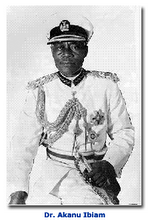
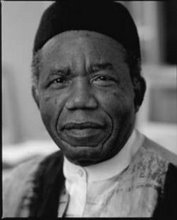
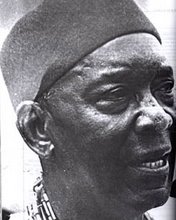
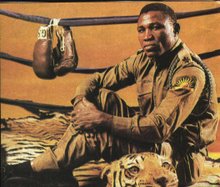
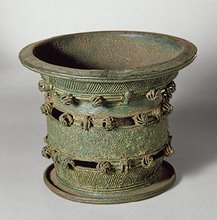
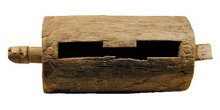
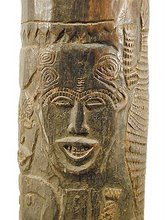
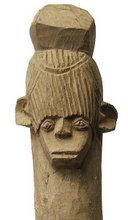
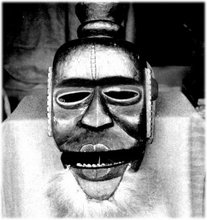

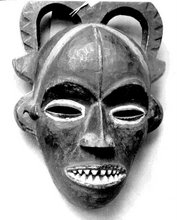
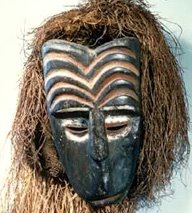
No comments:
Post a Comment